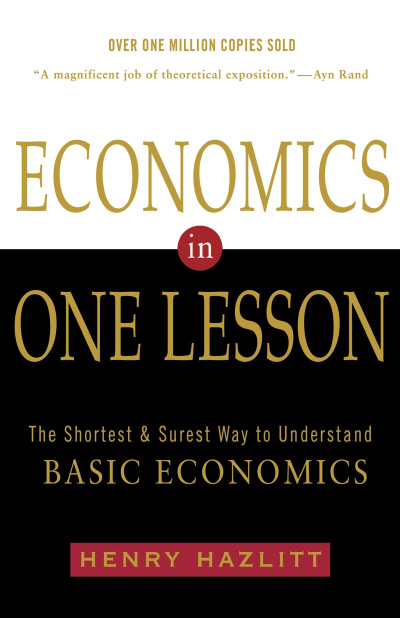| Formats |
Paperback |
eBook |
| Formats |
Paperback |
eBook |
Overview
The key to “the art of economics” is the ability to see not only short-term effects of public policy but also broader, long-term effects on the economy as a whole. With this basic concept, Hazlitt launches into an explanation of laissez faire economics. He traces examples like a storeowner’s broken window through the threads of the common fallacy, then reveals their flaws in this classic, brilliant breakdown of basic economics. He walks us through the hidden effects of interference with natural market forces and denounces the idea that government spending can “fix” an economy.
Hazlitt discusses how price control destroys the natural balance of an economy and how minimum wage laws “might be most harmful to the very industries they were designed to help.” He questions whether unions are effective in their mission to raise wages or whether they too hurt their own cause. He cautions against unnecessary fear of fluctuations in the value of money and exposes how taxes depress the economy by reducing incentive to produce.
Economics in One Lesson is a time-tested account that effectively illustrates the overlooked simplicity of the inner workings of a free market economy.
Contents
-
Preface to the New Edition
Preface to the First Edition
PART ONE: THE LESSON
1. The Lesson
PART TWO: THE LESSON APPLIED
2. The Broken Window
3. The Blessings of Destruction
4. Public Works Mean Taxes
5. Taxes Discourage Production
6. Credit Diverts Production
7. The Curse of Machinery
8. Spread-the-Work Schemes
9. Disbanding Troops and Bureaucrats
10. The Fetish of Full Employment
11. Who’s “Protected” by Tariffs?
12. The Drive for Exports
13. “Parity” Prices
14. Saving the X Industry
15. How the Price System Works
16. “Stabilizing” Commodities
17. Government Price-Fixing
18. What Rent Control Does
19. Minimum Wage Laws
20. Do Unions Really Raise Wages?
21. “Enough to Buy Back the Product”
22. The Function of Profits
23. The Mirage of Inflation
24. The Assault on Saving
25. The Lesson Restated
PART THREE: THE LESSON AFTER THIRTY YEARS
26. The Lesson After Thirty Years
A Note on Books
Index
Praise
“It is brilliant performance. It says precisely the things which need most saying and says them with a rare courage and integrity. I know of no other modern book from which the intelligent layman can learn so much about the basic truths of economics in so short a time.”
—F.A. Hayek, 1974 Nobel Laureate in Economic Science
“If there were a Nobel Prize for clear economic thinking, Mr. Hazlitt’s book would be a worthy recipient. . . Like a surgeon’s scalpel, it cuts through, objectively and impartially, much of the economic nonsense that has been written in recent years about our economic ailments.”
—John W. Hanes, former Undersecretary of the Treasury
“He is one of the few economists in human history who could really write.”
—H.L. Mencken
Author
Henry Hazlitt (11/28/1894–7/8/1993) was a self-educated, influential, libertarian economist, and journalist for The Wall Street Journal, The New York Times, Newsweek, and The American Mercury, among other publications. Hazlitt was also the founding vice-president of the Foundation for Economic Education and an early editor of The Freeman magazine.







